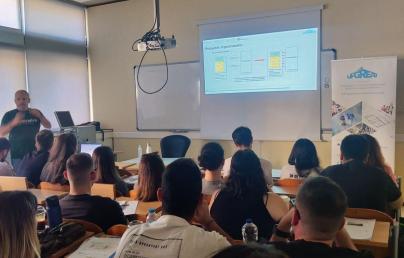Energy Efficiency Retrofitting of Buildings: the need of an integrated multidisciplinary approach to the training

Energy Efficiency Retrofitting of Buildings: the need of an integrated multidisciplinary approach to the training
Energy efficiency retrofitting of buildings is a topic high on the EU policy agenda since buildings are identified as one of the main sources of energy savings.
EU building stock is in general quite old and the retrofitting of both the envelope and the Heating, Ventilating and Air Conditioning (HVAC) plants is usually applicable and convenient from the energy point of view.
The implementation of such renovations is hampered by the high upfront cost for the investment and by the lack of adequate financial instruments which can support the renovation process.
Financial institutions are often reluctant to invest in energy efficiency due to its abstract nature and perceived high risk. For instance, investments in energy efficiency, such as retrofitting building envelopes, are not typically viewed as collateral for loans. This remains true even if installing insulation in a building located in a cold region could have a payback period of just a few years.
The roots of this approach can be found in a lack of understanding of the energy efficiency problem by financial professionals who usually have a Social Science and Humanity (SSH) background. Conversely, those developing energy retrofitting projects often come from Science, Technology, Engineering, and Mathematics (STEM) backgrounds, using a language that is different and challenging for financial professionals to grasp. This leads to the working in silos approach for these two professional categories and make difficult their interaction which would be beneficial for boosting the energy efficiency market.
Building on this context, the SHERLOCK project endeavours to break down this barrier by introducing an innovative teaching and learning approach to enhance the skills of both SSH and STEM professionals involved in energy efficiency in buildings. The goal is to educate SSH professionals about energy efficiency, enabling them to grasp the issue more comprehensively and adopt the language used by STEM professionals. Likewise, STEM professionals will receive training in financial disciplines, allowing them to understand the language and mindset of financial professionals. This upskilling effort aims to improve communication between these two professional groups, fostering collaboration and synergy in advancing energy efficiency initiatives.
The approach adopted for the upskilling is based on Micro-Credentials, namely small, targeted teaching units which focus on a very specific problem. The Micro-Credentials are provided through a MOOC platform in order to guarantee the flexibility in time always needed by professionals.
This is considered a consistent way to contribute to the removal of part of the knowledge barriers that still hamper the uptake of energy efficiency measures.


